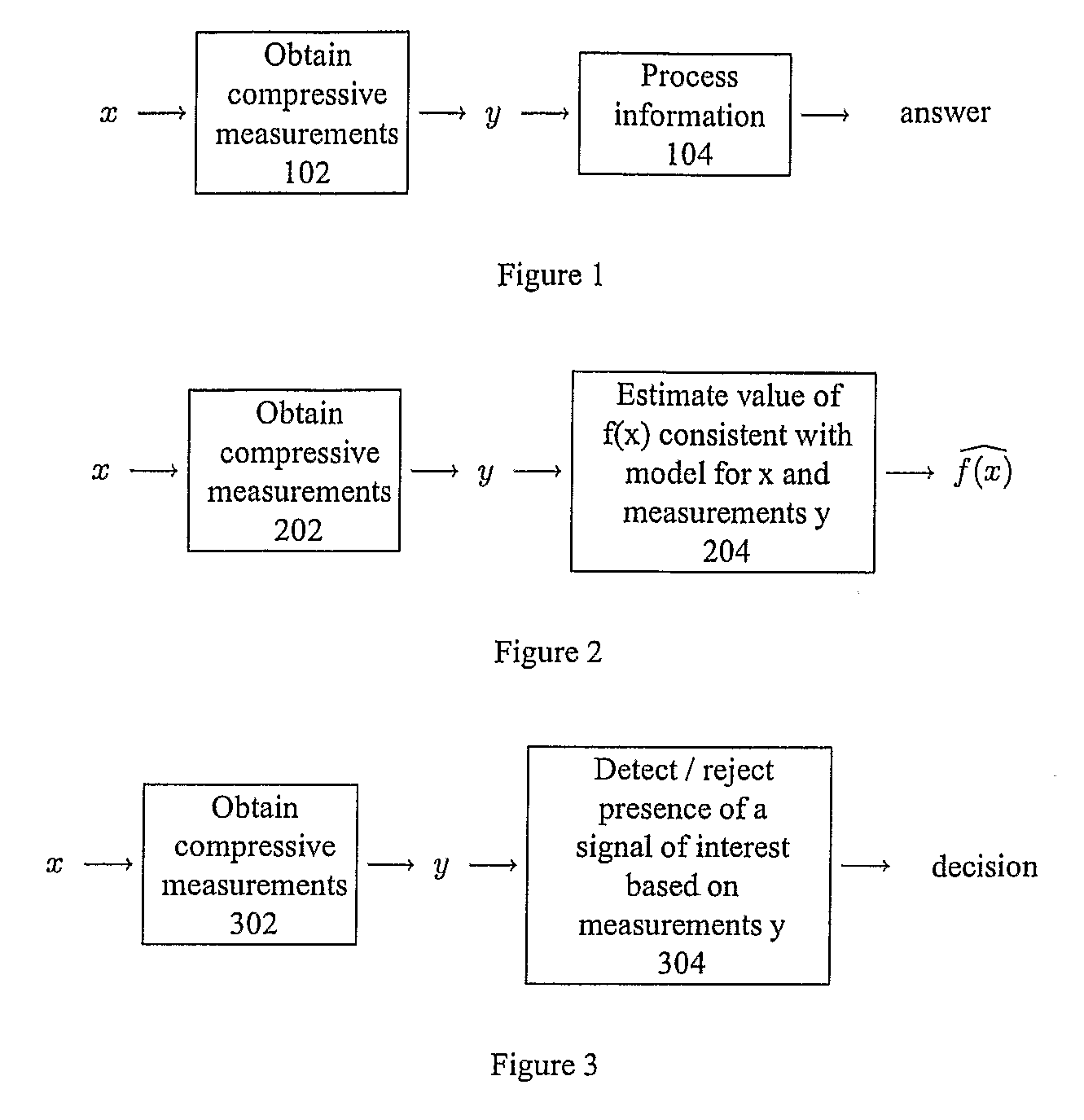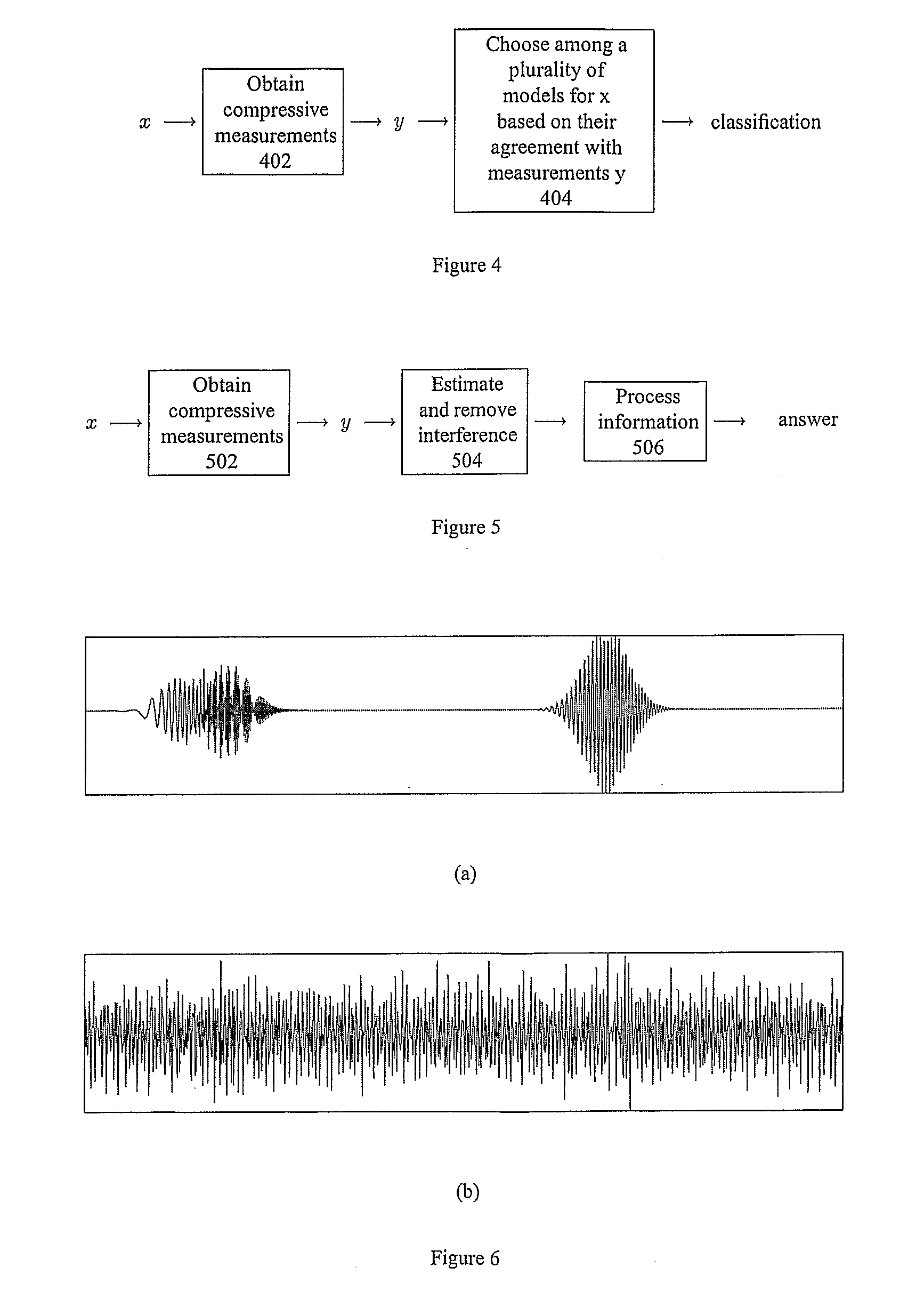Method and Apparatus for Signal Detection, Classification and Estimation from Compressive Measurements
a compressive measurement and signal detection technology, applied in the field of methods and apparatus for signal detection, classification, estimation, processing, can solve the problems of inherently wasteful process, high computational cost, and high sampling rate for long signals with complexity typically polynomial in the signal length
- Summary
- Abstract
- Description
- Claims
- Application Information
AI Technical Summary
Benefits of technology
Problems solved by technology
Method used
Image
Examples
Embodiment Construction
[0081]While the CS literature has focused almost exclusively on sparse signal reconstruction, compressive measurements—by which we mean measurements that can be roughly thought of as linear functions of the data where the number of these functions is less than the length of the signal (or the number of Nyquist samples for continuous-time signals)—can also be used to solve signal detection problems for a number of different classes of signal models, and without ever reconstructing the signal. This is a much more efficient approach when the end goal of the system does not actually require a perfect reconstruction, but merely requires the estimation of some parameter or the detection of some signal.
[0082]In general, the present invention is a method for extracting the desired information from a set of compressive measurements. For example, see FIG. 1. In FIG. 1102 our system obtains compressive measurements y of a signal x. In FIG. 1104 our system processes this data to extract the des...
PUM
 Login to View More
Login to View More Abstract
Description
Claims
Application Information
 Login to View More
Login to View More - R&D
- Intellectual Property
- Life Sciences
- Materials
- Tech Scout
- Unparalleled Data Quality
- Higher Quality Content
- 60% Fewer Hallucinations
Browse by: Latest US Patents, China's latest patents, Technical Efficacy Thesaurus, Application Domain, Technology Topic, Popular Technical Reports.
© 2025 PatSnap. All rights reserved.Legal|Privacy policy|Modern Slavery Act Transparency Statement|Sitemap|About US| Contact US: help@patsnap.com



